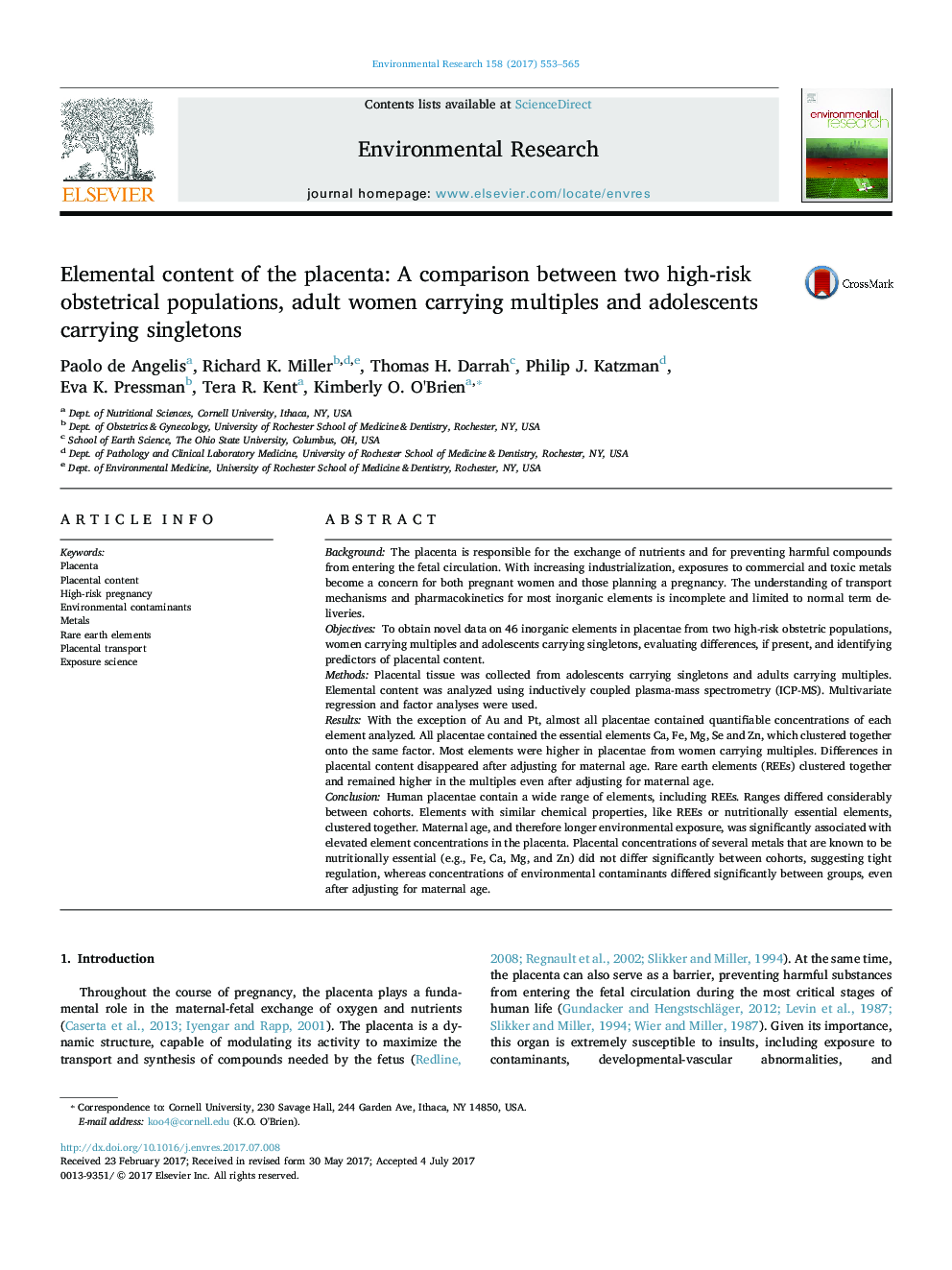| Article ID | Journal | Published Year | Pages | File Type |
|---|---|---|---|---|
| 5756296 | Environmental Research | 2017 | 13 Pages |
Abstract
Human placentae contain a wide range of elements, including REEs. Ranges differed considerably between cohorts. Elements with similar chemical properties, like REEs or nutritionally essential elements, clustered together. Maternal age, and therefore longer environmental exposure, was significantly associated with elevated element concentrations in the placenta. Placental concentrations of several metals that are known to be nutritionally essential (e.g., Fe, Ca, Mg, and Zn) did not differ significantly between cohorts, suggesting tight regulation, whereas concentrations of environmental contaminants differed significantly between groups, even after adjusting for maternal age.
Related Topics
Life Sciences
Environmental Science
Health, Toxicology and Mutagenesis
Authors
Paolo de Angelis, Richard K. Miller, Thomas H. Darrah, Philip J. Katzman, Eva K. Pressman, Tera R. Kent, Kimberly O. O'Brien,
